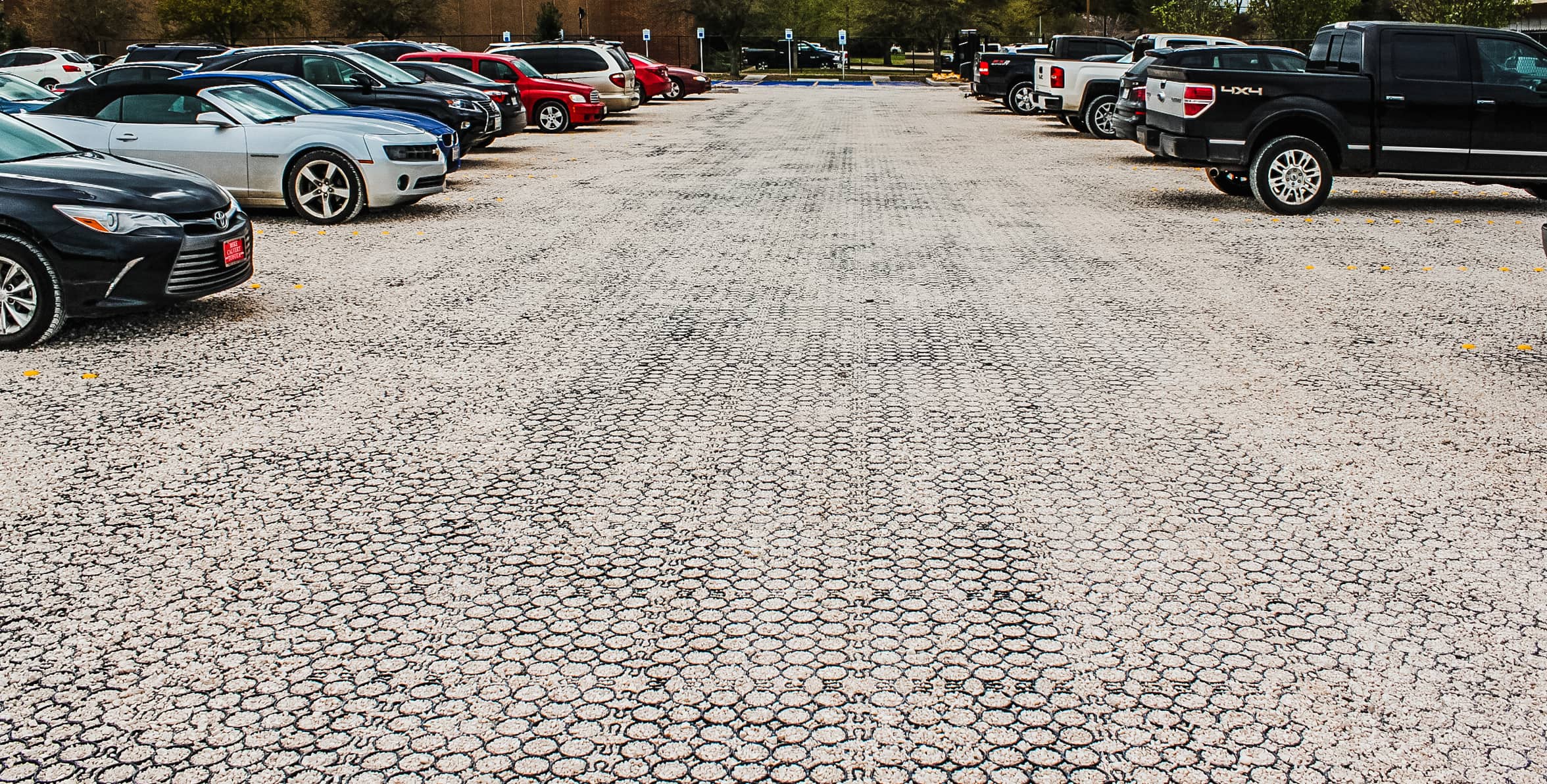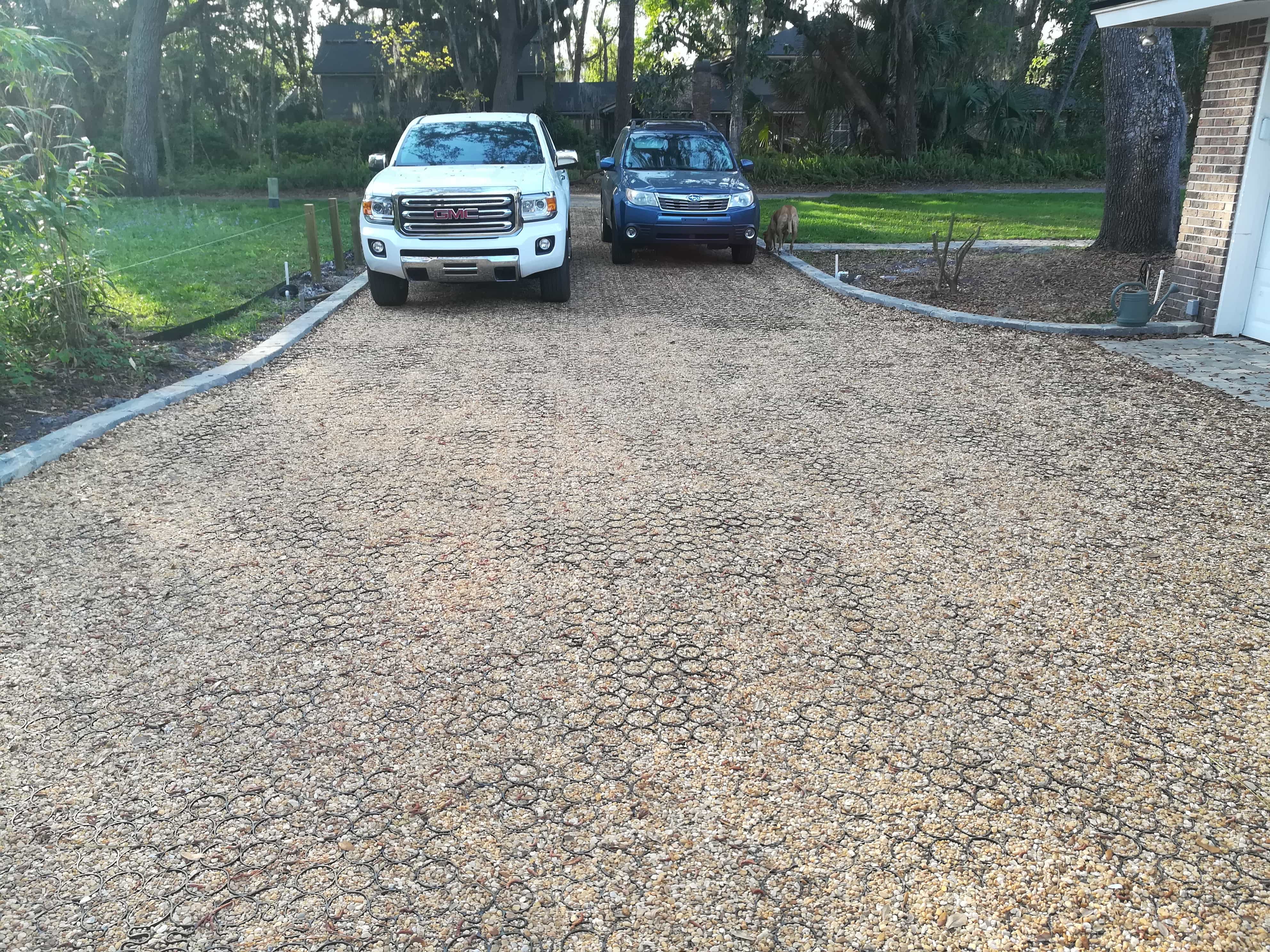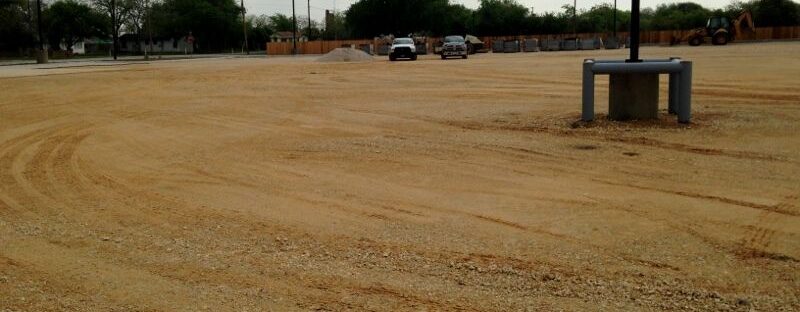
Ever pulled into a parking lot and found the accessible spaces impossible to use because of cracks, flooding, or unclear markings? For millions of people, that’s a frustrating—and all too common—problem. With the right planning and materials, ADA parking space requirements ensure that accessible parking spaces are safe, functional, and easy to navigate.
Understanding ADA Parking Space Requirements
The Americans with Disabilities Act (ADA) establishes clear guidelines for accessible parking, covering everything from the number of spaces required to their size, signage, and location. Any facility that provides public parking—whether it’s a shopping center, office building, or healthcare facility—must comply with these standards to ensure equal access for all visitors.
How Many Accessible Parking Spaces Are Required?
The number of accessible parking spaces a facility needs depends on the total parking capacity. At least one in every six accessible spaces must be van-accessible. Here’s a quick breakdown:
Designing Accessible Parking Spaces Correctly
It’s not enough to just have accessible spaces—they need to be usable and well-designed to meet ADA parking space requirements.
Size and Layout Requirements
A standard accessible parking space must be at least 96 inches wide, with an adjacent 60-inch access aisle to allow for wheelchair entry and exit. Van-accessible spaces require even more room, measuring either 132 inches wide with a 60-inch access aisle or 96 inches wide with a 96-inch access aisle. These spaces must also have a vertical clearance of at least 98 inches to accommodate taller vehicles.
Ensuring Clear Signage and Markings
Ever seen an accessible parking sign too low to be noticed? That’s a compliance issue. ADA parking space requirements mandate that accessible parking spaces must have the International Symbol of Accessibility clearly visible on a sign mounted at least 60 inches above the ground. Van-accessible spaces require an additional sign designating them for vans.
Painted pavement markings are just as important. If lines fade over time, drivers may park incorrectly, reducing accessibility. Regular restriping ensures that spaces and access aisles remain clearly defined.
Location and Accessibility Route: Placement Matters

Having accessible parking doesn’t help much if it’s in an inconvenient spot. ADA regulations require that accessible spaces be located on the shortest, most direct route to the building entrance. If a facility has multiple entrances, accessible parking should be evenly distributed to ensure fair access.
The route from the parking lot to the entrance must be stable, slip-resistant, and free of barriers. This means no loose gravel, steep inclines, or obstacles like dumpsters or signage blocking the way.
Why Surface Materials Matter for Accessibility
Not all parking lot materials provide a safe, long-lasting accessible surface. Asphalt may meet size requirements, but over time, it cracks, develops potholes, and creates hazards for individuals using wheelchairs, walkers, or canes.
TrueGrid Pavers: The Superior Solution
TrueGrid’s permeable paver systems, such as PRO LITE® and PRO PLUS®, offer superior durability and stability for accessible parking areas. Unlike asphalt, which requires frequent repairs and deteriorates over time, TrueGrid’s pavers provide a firm, slip-resistant surface that remains compliant with ADA standards for years. Designed to handle heavy loads and prevent water pooling, they ensure accessible spaces remain safe and require minimal maintenance.
Nobody wants to deal with a flooded or uneven parking lot. With TrueGrid, your parking spaces stay compliant and ready to perform, without the ongoing repairs asphalt demands.
Keeping Parking Spaces ADA-Compliant Year-Round
Even a perfectly designed accessible parking space can become non-compliant if it isn’t maintained properly.
- Snow and ice removal: Pushing snow into accessible parking spaces or blocking access aisles violates ADA regulations. Keep these spaces clear at all times.
- Pavement markings and signage upkeep: Signs should always be visible, and faded paint should be restriped before it becomes unreadable.
- Surface maintenance: Cracks, potholes, or uneven pavement should be repaired immediately to prevent accessibility barriers.
Keeping up with these simple maintenance tasks ensures that accessible parking spaces remain safe, compliant, and functional year-round.
The High Cost of ADA Non-Compliance
Skipping ADA compliance isn’t just risky—it’s expensive. Businesses can face fines of up to $75,000 for first offenses and $150,000 for repeat violations. Even worse, non-compliance can lead to lawsuits and costly parking lot overhauls.
State Inspections and Immediate Modifications
Some states conduct routine accessibility inspections, requiring property owners to make immediate, often expensive, modifications if violations are found. Staying compliant from the start saves time, money, and legal trouble.
State-Specific ADA Regulations
While ADA parking space requirements provide a national standard, some states enforce additional regulations for greater accessibility. California’s Title 24 building code mandates specific blue border markings for accessible spaces, while Florida requires contrasting colors and additional space for van-accessible parking. Business owners should check both federal and state regulations to ensure full compliance and avoid unnecessary fines.
Achieve ADA-Compliant Parking with TrueGrid Solutions

Nobody wants to deal with cracked, waterlogged, or non-compliant parking spaces. Our sustainable solutions keep accessible spaces safe, stable, and maintenance-free—no constant repairs, no water pooling, no fading paint.
Don’t wait until non-compliance becomes a costly problem. Ensure your parking lot is accessible, durable, and ADA-compliant with TrueGrid’s permeable paving solutions. Contact us today for more information.




